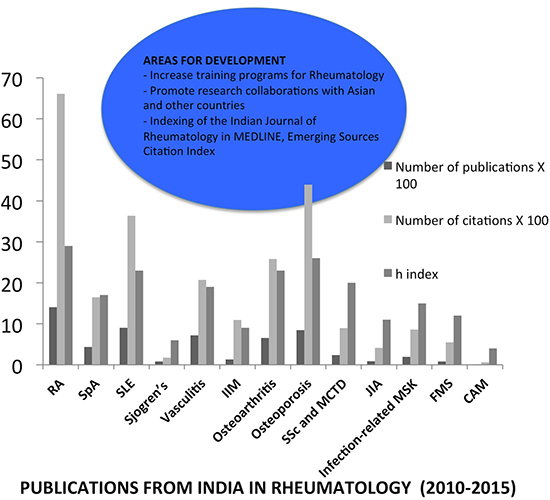1. Murray CJ, Lopez AD. Measuring the global burden of disease. N Engl J Med. 2013; 369:448–457.
2. Storheim K, Zwart JA. Musculoskeletal disorders and the global burden of disease study. Ann Rheum Dis. 2014; 73:949–950.
3. Hoy D, March L, Brooks P, Blyth F, Woolf A, Bain C, Williams G, Smith E, Vos T, Barendregt J, et al. The global burden of low back pain: estimates from the global burden of disease 2010 study. Ann Rheum Dis. 2014; 73:968–974.
4. Hoy D, March L, Woolf A, Blyth F, Brooks P, Smith E, Vos T, Barendregt J, Blore J, Murray C, et al. The global burden of neck pain: estimates from the global burden of disease 2010 study. Ann Rheum Dis. 2014; 73:1309–1315.
5. Cross M, Smith E, Hoy D, Nolte S, Ackerman I, Fransen M, Bridgett L, Williams S, Guillemin F, Hill CL, et al. The global burden of hip and knee osteoarthritis: estimates from the global burden of disease 2010 study. Ann Rheum Dis. 2014; 73:1323–1330.
6. Cross M, Smith E, Hoy D, Carmona L, Wolfe F, Vos T, Williams B, Gabriel S, Lassere M, Johns N, et al. The global burden of rheumatoid arthritis: estimates from the global burden of disease 2010 study. Ann Rheum Dis. 2014; 73:1316–1322.
7. Smith E, Hoy D, Cross M, Merriman TR, Vos T, Buchbinder R, Woolf A, March L. The global burden of gout: estimates from the Global Burden of Disease 2010 study. Ann Rheum Dis. 2014; 73:1470–1476.
8. Sànchez-Riera L, Carnahan E, Vos T, Veerman L, Norman R, Lim SS, Hoy D, Smith E, Wilson N, Nolla JM, et al. The global burden attributable to low bone mineral density. Ann Rheum Dis. 2014; 73:1635–1645.
10. Handa R. Rheumatology in India--quo vadis? Nat Rev Rheumatol. 2015; 11:183–188.
11. Gasparyan AY, Ayvazyan L, Blackmore H, Kitas GD. Writing a narrative biomedical review: considerations for authors, peer reviewers, and editors. Rheumatol Int. 2011; 31:1409–1417.
12. Malaviya AN, Kapoor SK, Singh RR, Kumar A, Pande I. Prevalence of rheumatoid arthritis in the adult Indian population. Rheumatol Int. 1993; 13:131–134.
13. Malaviya AN, Singh RR, Singh YN, Kapoor SK, Kumar A. Prevalence of systemic lupus erythematosus in India. Lupus. 1993; 2:115–118.
14. Chopra A. COPCORD--an unrecognized fountainhead of community rheumatology in developing countries. J Rheumatol. 2004; 31:2320–2322.
15. Chopra A, Patil J, Billempelly V, Relwani J, Tandle HS; WHO-ILAR COPCORD Study. WHO International League of Associations from Rheumatology Community Oriented Program from Control of Rheumatic Diseases. Prevalence of rheumatic diseases in a rural population in western India: a WHO-ILAR COPCORD Study. J Assoc Physicians India. 2001; 49:240–246.
16. Mathew AJ, Chopra A, Thekkemuriyil DV, George E, Goyal V, Nair JB; Trivandrum COPCORD Study Group. Impact of musculoskeletal pain on physical function and health-related quality of life in a rural community in south India: a WHO-ILAR-COPCORD-BJD India study. Clin Rheumatol. 2011; 30:1491–1497.
17. Chopra A. Disease burden of rheumatic diseases in India: COPCORD perspective. Indian J Rheumatol. 2015; 10:70–77.
18. Chopra A. The COPCORD world of musculoskeletal pain and arthritis. Rheumatology (Oxford). 2013; 52:1925–1928.
19. Chopra A, Anuradha V, Lagoo-Joshi V, Kunjir V, Salvi S, Saluja M. Chikungunya virus aches and pains: an emerging challenge. Arthritis Rheum. 2008; 58:2921–2922.
20. Petty RE, Southwood TR, Manners P, Baum J, Glass DN, Goldenberg J, He X, Maldonado-Cocco J, Orozco-Alcala J, Prieur AM, et al. International League of Associations for Rheumatology classification of juvenile idiopathic arthritis: second revision, Edmonton, 2001. J Rheumatol. 2004; 31:390–392.
21. Kunjir V, Venugopalan A, Chopra A. Profile of Indian patients with juvenile onset chronic inflammatory joint disease using the ILAR classification criteria for JIA: a community-based cohort study. J Rheumatol. 2010; 37:1756–1762.
22. Oen K, Tucker L, Huber AM, Miettunen P, Scuccimarri R, Campillo S, Cabral DA, Feldman BM, Tse S, Chédeville G, et al. Predictors of early inactive disease in a juvenile idiopathic arthritis cohort: results of a Canadian multicenter, prospective inception cohort study. Arthritis Rheum. 2009; 61:1077–1086.
26. Bornmann L, Marx W, Gasparyan AY, Kitas GD. Diversity, value and limitations of the journal impact factor and alternative metrics. Rheumatol Int. 2012; 32:1861–1867.








 PDF
PDF ePub
ePub Citation
Citation Print
Print





 XML Download
XML Download